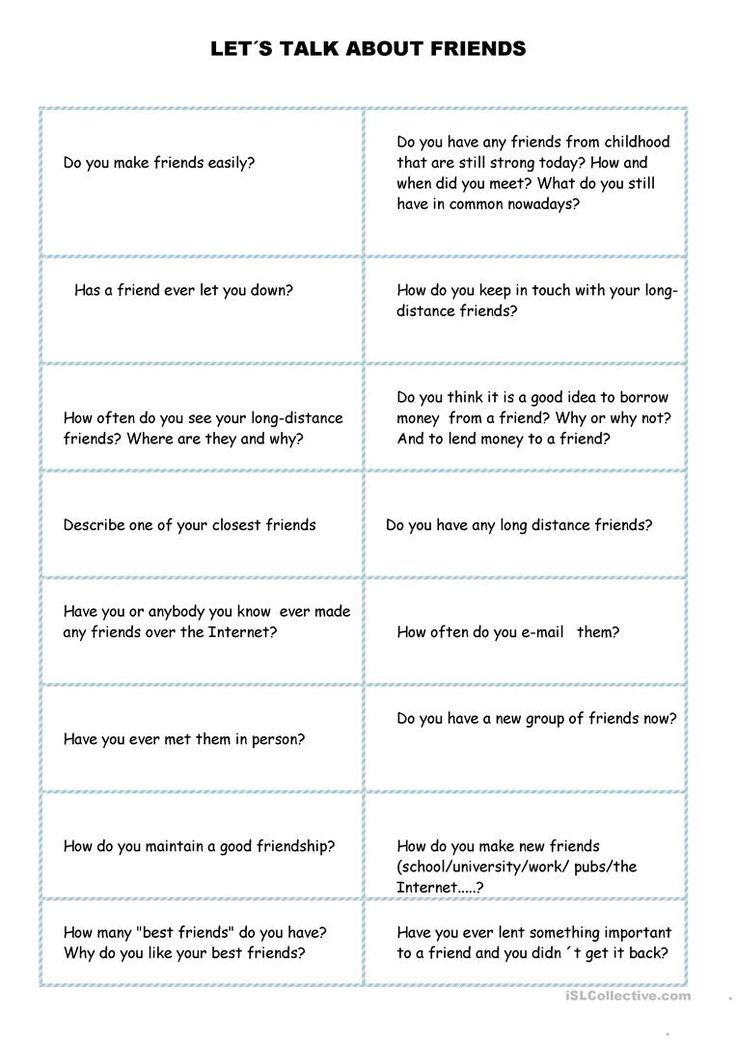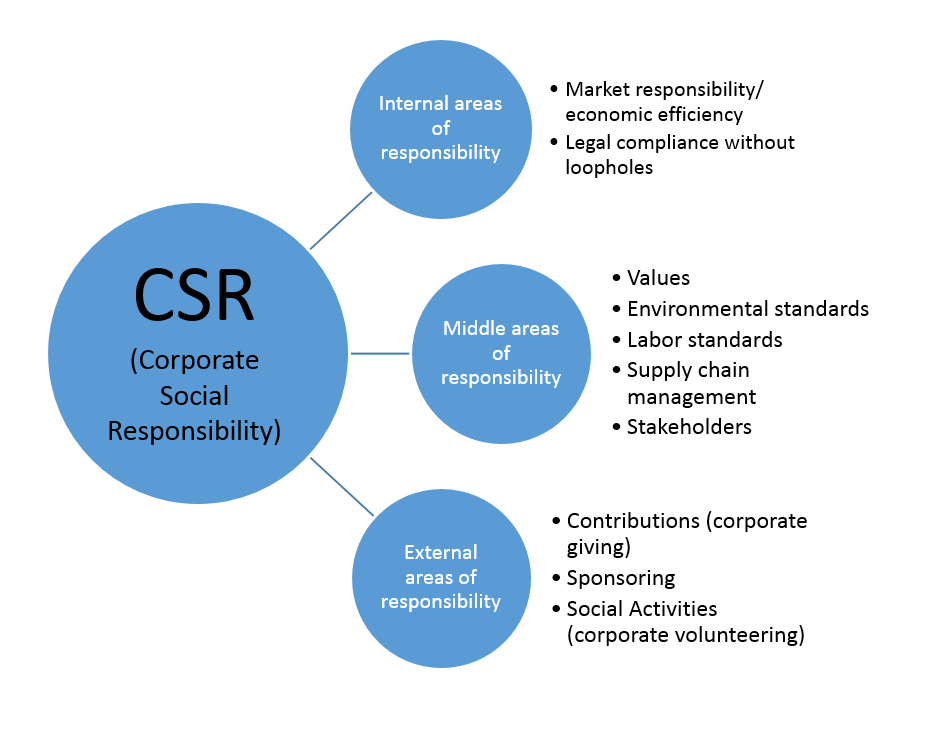Coach vs therapist
Life Coach vs. Therapist: What's The Difference?
When seeking professional help for emotional wellbeing and personal growth, the default option you may think of is therapy. Recently, however, you may have also heard people talk about working with a life coach.
Life coaches are professionals who help you achieve personal or professional goals. While approaches to life coaching vary, most focus on personal empowerment, motivation, and strategies to define and reach your dreams.
Sound similar to therapy? Here are 6 key differences between life coaching and therapy, and how to choose one over another.
1. Topics: Therapy focuses on mental health; life coaching focuses on goalsThe major difference between therapy and life coaching is the focus of the work: therapy focuses on mental health and emotional healing, while life coaching focuses on setting and achieving goals.
While therapists are trained mental health professionals who are in the regulated field of healthcare and require licensure, life coaches do not have mental health training and are not equipped to diagnose or treat mental health conditions (unless a life coach was previously trained as a therapist, which is also common).
Consider therapy if you want to heal or get help with a mental health concern; try life coaching if you need help getting “unstuck” or realizing a fuller potential.
When to see a therapist- You experience mental health symptoms that cause distress in your life (i.e., anxiety, depression, trauma, disordered eating).
- You want to heal from past hurts or trauma.
- You need support navigating emotions.
- You struggle with interpersonal relationships and want to learn strategies to feel less impacted by others.
- You are experiencing relationship issues and could benefit from couples counseling.
- You want to get ‘unstuck’ and set goals you will actually achieve.
- You want to accelerate to the next step in your career.
- You feel like your life is on autopilot, and want to challenge yourself or break out of your comfort zone.
- You want to stop unhelpful habits and replace them with healthy alternatives.
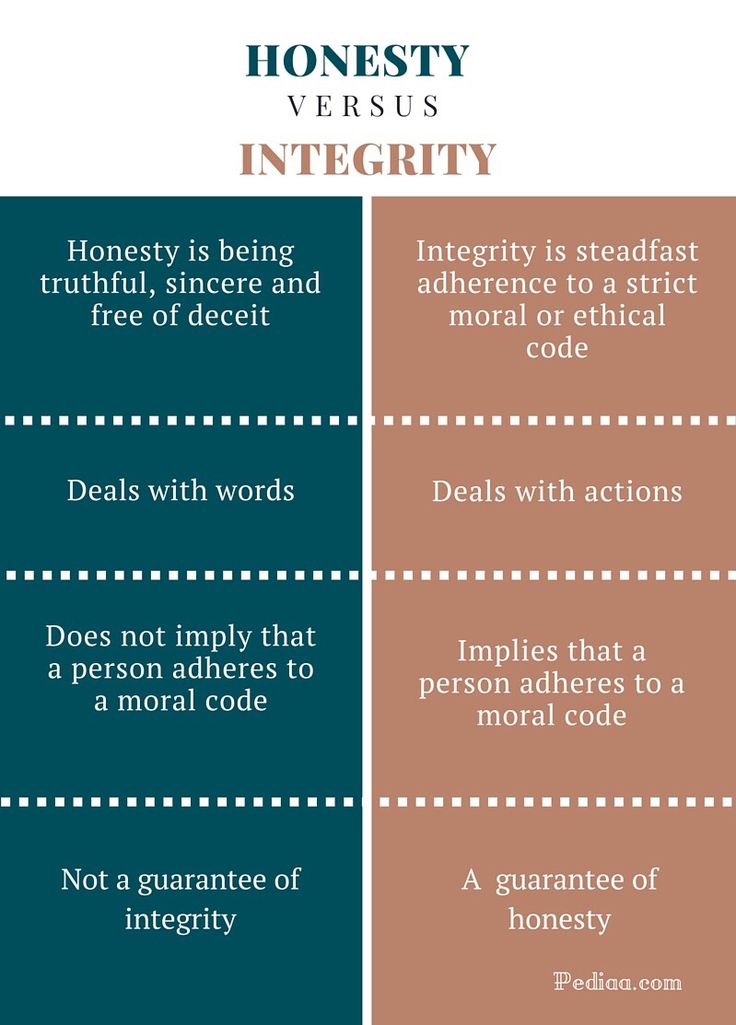
- You know that your inner critic keeps you from living your best life and you want to learn how to quiet that voice.
- You desire a life with purpose and meaning but do not know where to start.
- You feel confused about the next chapter in your life (i.e. struggling with career decisions, major life choices) and would like guidance on what would best serve you.
- You know that you have a lot to feel grateful for but something is missing and you need that extra inspiration to piece your puzzle together.
- You want to tap your inner motivation for a major goal, such as running a marathon.
- You want to hold yourself more accountable, whether in your personal or professional life
Download Your Free Life Coach vs. Therapist: What's The Difference? Guide
2. Skills: Therapy helps you learn to heal; coaching empowers you to achieve goals
Therapists help clients look to their figurative yesterdays in order to overcome deep-rooted issues, whereas life coaches are there to help you jump off today's launching point to succeed tomorrow.
The skills you learn from a therapist are designed to foster healing from whichever challenge you are facing. Coaching, on the other hand, sets you up with tools to reach bigger dreams or break free if you feel stuck on repeat in your life.
Therapy helps you heal from mental health challengesIn therapy, you will address mental and emotional health challenges you're facing this by learning therapy techniques like:
- Cognitive reframing and mindfulness skills
- Gaining insight into how your past affects you today through psychoanalysis
- Healing past traumatic experiences
- Resolving relationship issues through couples counseling.
Success in therapy is measured by things like improved mood, lower anxiety levels, more nourishing eating habits, and a greater sense of happiness.
Life coaching teaches you how to achieve big dreams and/or break free if you feel stuckOn the other hand, most life coaching focuses on helping you pursue your passions, or break free of stagnation or "stuckness. "
"
With a life coach, you might work on discovering your passions, strategizing a path to achieving them, and building the positive mindset that will empower you to achieve them.
A typical life coaching session includes:
- Identifying the client’s life vision
- Reviewing their program goals
- Creating the agenda for the session
- Exploring homework and assignments from the previous week
- Setting goals for the next sessions
In therapy, you face the past in order to move forward
The therapy that most people are familiar with presents an opportunity to look at what's going on inside – emotionally, psychologically, or interpersonally. In therapy sessions, you’re often returning to the emotional experiences, the patterns, the trauma, the learning, and the beliefs that you had in the past – and connecting the dots to understand how they have now brought you to this time with challenges.
The goal of therapy is to release any places where you're blocked so you’re able to be happier, more settled, and at peace. Therapy, at its core, is working on the psychological problems from their source and doing healing work. Essentially, in therapy you’re deeply examining the questions and solving them, so that you feel free to move forward.
Coaching focuses on improving the “here and now”Coaches (including therapists who practice coaching) will absolutely be interested in what some of their clients’ “source material” is, and will want to know what life experiences have brought you to where you are.
That said, the goal in coaching is not to necessarily go back and address it, or to heal it, or to change it. Instead, it’s just referenced.
What you’re working on in coaching is: Where are you now, and where do you want to be?
4. Structure: The format of therapy sessions depend on the modality; coaching sessions often have clear structuresTherapy session structures depend on the type of treatmentTherapy typically begins with a longer initial session, known as an intake. In this session, clients and therapists have the opportunity to get to know one another better, and assess whether there’s a fit.
In this session, clients and therapists have the opportunity to get to know one another better, and assess whether there’s a fit.
Subsequent session structure depends on the therapist’s approach. For example, in art therapy, you may spend your time creating and discussing your art; you could discuss the thoughts and feelings that emerge as you draw, paint, or sculpt, as well as memories that arise during the creative process.
This, of course, is a different structure than that of, say, EMDR therapy, in which your therapist guides you through a series of eye motions or movements designed to accelerate your processing of past trauma or conflict.
Coaching sessions are structured to facilitate progressLife coaches also often begin with a longer initial session to gather information about the client’s life goals, obstacles that have gotten in the way, mindset and behaviors that have been helpful or harmful to the client.
Subsequent sessions are designed to prioritize the client’s strengths and values, visualize their future, and learn science-backed strategies for cultivating happiness.
The point of coaching is constant progress, so sessions are geared to nurture your strengths and use that learning to get you forward in an effective, practical way.
5. Duration: Whereas therapy is not usually time-limited, coaching is often short-termTherapy often has no set “end date”
Therapy is often not time-limited. Sessions can continue for months, or years, in an ongoing fashion. Notable exceptions include highly structured formats, like pure cognitive behavioral therapy (CBT) and premarital counseling.
Coaching clients often enroll in short-term package sessionsCoaches often offer their services in packages. From 6-10 weeks up to annual options, coaching packages are varied but more commonly short-term.
One would sign up for their coach’s package and upon completion decide if they would like to continue working with their coach by signing up for an additional package or transition to as needed sessions.
Look for a therapist you feel comfortable opening up to, and who has direct expertise with your presenting problems
When searching for a therapist, prioritize comfort and fit. This concept, known as the therapeutic alliance, refers to the idea of a strong, productive relationship between therapist and client.
Additionally, when searching for a therapist, you’ll want to prioritize someone who has experience (or even specializes in) the presenting issue you’re seeking help with, such as depression, anxiety, OCD, trauma, or any other mental health condition
If applicable, you may also want to work with a professional who can prescribe medication, such as a psychiatrist or nurse practitioner.
Seek a life coach who has qualified credentials, and whose philosophy inspires youThere are no specific requirements to become a life coach, and the field is not regulated by any governing body. While many coaches do elect to become certified, literally anyone can call themselves a life coach.
While many coaches do elect to become certified, literally anyone can call themselves a life coach.
Working with a coach who has completed the required education, training, and standards that a therapist, masters level or doctoral level clinician would have helps clients feel assured that they are in qualified hands.
Also, seek a life coach who has the following qualities:
- Someone who inspires you and gets you excited about living your best life.
- Someone who has experience working on the exact issues you are seeking help with.
- Someone who uses effective strategies proven to improve your life.
- Someone who you can feel comfortable being vulnerable and open with.
Finally, note that coaches all have different coaching philosophies – and this will guide your partnership, so make sure to select a coach whose approach resonates with you.
When it comes to self-care and seeking help, there’s no “one-size-fits-all” approach. What works for others might not work for you.
This truth applies even at different points of your own life: Whereas in the past, you might have thrived under the holistic lens that therapy provides, now you'd benefit more from a little nudge here and there. Or vice versa: Maybe you've never sought therapy before, but your situation or health has changed, and you find yourself needing the full-on support that therapy affords.
No matter your incentive for seeking help, it's helpful to understand where the roles of a life coach and a therapist splinter, so you can make an informed decision on which is right for you. Zencare makes it simple to find both therapists and life coaches. You can filter our therapist directory by Specialities, including Life Coaching.
No matter which provider type you choose to work with, remember to keep personal fit and licensure in mind when starting your search. Then pat yourself on the back: You're taking an important first step in self-improvement and empowerment!
Life coach vs.
 therapist: similarities and differences
therapist: similarities and differencesOne of the most common misconceptions about life coaching is that it is therapy in disguise – or worse yet –therapy from an unlicensed practitioner. In reality, life coaching is truly its own unique service designed to help ambitious achievers meet the outcomes that will bring them success and fulfillment in any and all areas of life. Here are some of the differences between a life coach vs. therapist and a basic guide for when each service is appropriate.
Defining terms: life coach vs. therapist
What is therapy? Therapy, also called counseling or psychotherapy, is a long-term process in which a client works with a healthcare professional to diagnose and resolve problematic beliefs, behaviors, relationship issues, feelings and sometimes physical responses. The idea behind therapy is to focus on past traumas and issues to change self-destructive habits, repair and improve relationships and work through painful feelings. In this sense, therapy focuses on the past and on introspection and analysis, with the hope of resolving past issues and creating a happier, more stable future..jpg)
What is life coaching? In life coaching, a client works with a coach who is not a healthcare professional to clarify goals and identify obstacles and problematic behaviors in order to create action plans to achieve desired results. The main way that a life coach vs. therapist works is that the life coach takes the client’s current starting point as an acceptable neutral ground and is more action-based from that point onward. A life coach enables the person receiving treatment to take control of their life and take action to steer it toward their goals.
Get results starting right now with Tony’s priming exercise
Learn About Priming
Differences between life coaches and therapists
Although life coaches and therapists occasionally help clients with similar problems, their work is not the same. Here are the main differences between a life coach and therapist.
Difference one: Focus of the programThe focus of life coaching is one of the main things that distinguishes it from therapy. Life coaches identify and describe current problematic behaviors so the client can work to modify them. Therapists analyze their client’s past as a tool for understanding present behaviors. In other words, therapists focus on “why” certain behavioral patterns occur, and coaches work on “how” to work toward a goal.
Life coaches identify and describe current problematic behaviors so the client can work to modify them. Therapists analyze their client’s past as a tool for understanding present behaviors. In other words, therapists focus on “why” certain behavioral patterns occur, and coaches work on “how” to work toward a goal.
Therapy will focus on your thoughts and feelings and how they are informed by your past. Life coaching may touch on these concepts as you break down your limiting beliefs and examine your blueprint, but its ultimate focus is always on the present and the future.
Difference two: Goals of the programWhen you look at a coaching vs. counseling practice, it’s important to recognize that counseling helps clients explore and understand their subconscious and unconscious mind. It aims to reach a deep understanding of behaviors and patterns with a goal of overall mental health. This is why counseling and therapy can be helpful for issues like depression and anxiety.
The goal of life coaching is to help you get “unstuck.” Life coaching is about action and results. Life coaches measure their client’s success with key performance indicators and specific behavioral outcomes. They’ll help you set SMART goals, provide accountability and celebrate your wins – all on the road to achieving your dreams.
Difference three: FrameworkWhile both life coaching and therapy use talk sessions with a trained professional. Many of the similarities in how they are organized end there. Therapy involves more unstructured sessions that are guided by the client as well as the type of therapy. Life coaching sessions are much more structured and focused on actionable strategies and visible growth.
The duration of the services also varies. Therapy tends to be a long-term commitment – many people go to therapy for years or even their entire lives. The main difference between a life coach and therapist is that a life coach sets clients up with the process and skills they need to eventually coach themselves. Life coaching isn’t meant to be forever. Life coaches also do not diagnose the people they work with, while therapists determine illnesses and pathologies so their patients can be clinically treated.
Life coaching isn’t meant to be forever. Life coaches also do not diagnose the people they work with, while therapists determine illnesses and pathologies so their patients can be clinically treated.
Click for full size infographic.
Want to share this on your website?
Just copy & paste this code where you want it:
<img src=”https://cdnwp.tonyrobbins.com/wp-content/uploads/2016/10/Coach-v-Therapist-Infographic-Cut-Out.jpg><br /><br /><br /><br /><br /><br /><br /><br /><br /><br /><br /><br /><br /><br /><br /><br /><br />
<a href=”https://www.tonyrobbins.com/coaching/life-coach-vs-therapist/” target=”_blank”>© Tony Robbins</a>
Similarities between a life coach vs. therapy
While the answer to “What is therapy?” is very different from what a life coach does, there are some similarities. Both work to enable clients to make positive changes in their lives and become more productive. While therapists diagnose and treat from a healthcare perspective, not all therapy clients are ill; many healthy people seek the services of both therapists and life coaches. Therapists may work with specific results in mind, such as the cessation of a particular problematic behavior.
While therapists diagnose and treat from a healthcare perspective, not all therapy clients are ill; many healthy people seek the services of both therapists and life coaches. Therapists may work with specific results in mind, such as the cessation of a particular problematic behavior.
Despite occasional areas of overlap, the work and processes of therapists and life coaches are distinct.
When to seek out a life coach vs. therapist
Naturally, the decision to seek out a life coach vs. a therapist is a very personal one. It might help to imagine yourself getting ready to climb a mountain. You could either hire an expert sherpa and guide for your expedition or a doctor. Which will you choose? Which one will be most helpful during your specific journey?
If you are physically unwell or would be in danger if you even attempted the climb, a sherpa and guide wouldn’t do you any good. You need to be at a baseline level of good health before you can make the climb at all – if you’re not, you might need to see the doctor before trying something that challenging. However, if you’re healthy and just need someone to help you with climbing strategy, carrying the load of supplies and finding the best path, the sherpa and guide is the best bet.
However, if you’re healthy and just need someone to help you with climbing strategy, carrying the load of supplies and finding the best path, the sherpa and guide is the best bet.
Coaching vs. counseling is similar to this example. The therapist is the doctor. They get you well enough to take on major challenges in your life by exploring your mental and emotional well-being. The life coach is the sherpa and guide. They have an expert knowledge of your climb and can help you reach the summit.
A life coach offers guidance by helping clients:✓ Clarify and achieve personal and professional goals
✓ Create business plans
✓ Work to improve communication skills
✓ Achieve financial independence and security
✓ Achieve a work/life balance
✓ Start a new business or growing a current business
A therapist, on the other hand, focuses their conversation on ways to:✓ Recover from past traumas
✓ Explore why past relationships (business or personal) have been destructive
✓ Work through depression or anxiety that affects the ability to function at home or work
✓ Survive a divorce or loss of a loved one
In order to get the right kind of professional expertise, it is crucial to understand how a life coach vs. therapist are different. Do you need a therapist, or do life coaching services better suit you? Whatever you choose, remember that life coaching is more than a watered-down version of therapy. It is a dynamic discipline designed to help inspire people to achieve more than they believe is possible.
therapist are different. Do you need a therapist, or do life coaching services better suit you? Whatever you choose, remember that life coaching is more than a watered-down version of therapy. It is a dynamic discipline designed to help inspire people to achieve more than they believe is possible.
Ready to achieve real results?
Tony Robbins Results Coaches help you find your vision, focus and get results. Discover what you’re capable of with a coach.
Schedule My Free Session
Want to achieve real results NOW? Fill in the form below to schedule your FREE 30-minute session with your Tony Robbins Results Coaching Strategist.
By entering your information on the Tony Robbins website, you agree that we may collect and use your personal information for marketing, and for other purposes, as set forth in our Privacy Policy, which we encourage you to review.
This website uses cookies to personalize your experience and target advertising. . By continuing to use our website, you accept the terms of our updated policies
. By continuing to use our website, you accept the terms of our updated policies
Tatyana Sidorova. Distortion of Values, Gestalt Approach Principles and Ethical Standards
This article was born from my observations as a trainer and as a supervisor in working with psychotherapy students. These are my personal impressions and thoughts that I want to share in the hope that they may be useful to those who plan to link their lives with the profession of a psychotherapist.
My reflections began with the surprise that began to arise in the process of supervising the work of "adult students" (completing the second stage of education) and young coaches: who taught them this? Gradually, I realized that the question should be put differently: how did they learn this? Because “amazing beauties” were “said” by students who graduated from a variety of coaches, including me ... (which plunged me into particular confusion ... - I meant something completely different .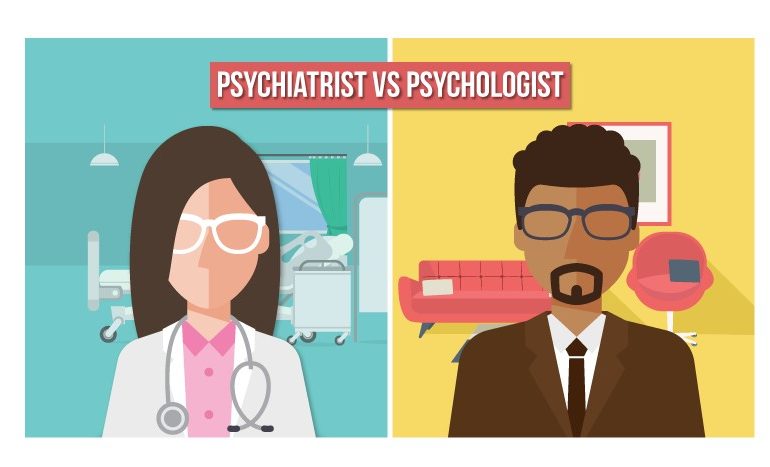 ..). nine0003
..). nine0003
It is clear that as they taught, so they learned ... However, within the framework of this article I am not going to discuss the problems of learning, this is a completely different topic, so I will simply share my observations and thoughts about the principles, values of the Gestalt approach, their distortions, the sources of these distortions and their relationship to the maintenance of ethical standards.
First, about principles and values, as well as about their distortions.
Here are some examples that surprised me. The young coach, in the presence of many others, including much more “senior” coaches, happily announces “And I like to lead the basic groups most of all, you don’t have to prepare for them.” I was confused ... For me, basic groups are still a difficult and responsible business. It is there that "they (that is, students) learn" this "...
The therapist in session aggressively promotes his "rescue" options for the emotionally dependent client. The client, of course, rejects them as impossible for him. The therapist ends the session by expressing to the client his disappointment “that everything turned out this way” and resentment that the client did not take advantage of the therapist’s suggestions, which means “it’s his own fault that no changes happened.”
The client, of course, rejects them as impossible for him. The therapist ends the session by expressing to the client his disappointment “that everything turned out this way” and resentment that the client did not take advantage of the therapist’s suggestions, which means “it’s his own fault that no changes happened.”
In supervision, the therapist "in a blue eye" says that the client himself is responsible for such a result of work, since he is "an adult and must understand that it is necessary to risk something for the sake of change." And to the question of what made the therapist make such active attempts to find “salvation” options for the client, the therapist replies that “the client himself does not understand that such a life harms him and does not see what he needs to do.” These are such strange relations with the concept of "responsibility". nine0003
It seems that where the therapist feels competent, “good”, the responsibility for what happens belongs to him, but where these qualities of the therapist can be called into question, the responsibility will be shifted to the client . ..
..
The question of value for the client, therapeutic self-presentation (feelings of disappointment and resentment) is decided by the therapist on the basis of his idea of the principle of authenticity, sincerity and equality of two people coming into contact: any of my feelings, since they arose in this contact, can and should be brought to the border of contact, it is also the therapist's ability to "take care" of himself. nine0003
When asked how the therapeutic position differs from the client and what the therapist charges money for, the answer follows: the positions differ in that he has a problem, and not me, and I have time that I can spend on helping to solve it Problems. And it seems that there is still formally ... During the break, I see how the "therapist" explains to the "client" what is "wrong" with him and continues to offer his help to the client. Now in life circumstances, free of charge, humanly...
These examples show how the basic values and principles of Gestalt therapy (in this case, the principles of responsibility, freedom, presence, dialogue) are distorted under the influence of the therapist's personal characteristics. nine0003
nine0003
Distortions in the implementation of these principles are followed by distortions in the ethical position of the therapist, which most often manifests itself in violation of the client's boundaries (both psychological and physical), in the imposition of certain rules of behavior on him, in a rude or authoritarian form of treatment of the client, in disrespectful reviews of colleagues.
The Therapist's Code of Ethics has long been prescribed (I wonder how many students read it?), it is simple and clear for psychotherapists of any "confessions".
It is based on the requirements of confidentiality, adherence to the boundaries of the therapeutic relationship (non-interference in the client's privacy, respect for other people's individuality), a clear financial policy, the improvement of the psychotherapist professionally and personally (not using the relationship with the client to satisfy one's own emotional needs), relationship rules with colleagues and the community in general. nine0003
nine0003
A small digression.
Many times I have heard reproaches addressed to me for being too exacting and even picky: well, just think, I violated the boundaries of relationships once, well, I pushed the client in something, well, I gave a couple of good pieces of advice, well, I “slipped” here and there with whom it doesn’t happen, it’s just one special case and everything is in the same spirit, getting upset about these reasons is not taking care of yourself. And every time I want to ask: what case will be considered “finishing work”?
On what occasion can one begin to make professional demands and “yes, merged, very much like me” will become not a natural human flaw, but a professional failure of this particular session? professional development impossible? nine0003
From what moment, I beg your pardon, the childish position requiring unconditional acceptance, support and approval of any initiative (just by the fact of their existence), will be replaced by the position of responsibility for their therapeutic actions with all the consequences, including the ability to accept and use evaluative work feedback?
I do not agree that supervision should not have any "evaluative tone". The “valuelessness” of supervision is the same myth as the myths about the equality of the positions of the client and the therapist, their equal responsibility and freedom of the therapist’s emotional self-expression in work. nine0003
The “valuelessness” of supervision is the same myth as the myths about the equality of the positions of the client and the therapist, their equal responsibility and freedom of the therapist’s emotional self-expression in work. nine0003
The supervisee always adds an evaluation factor to what he hears from the supervisor, at least I have not seen anything else. And it seems to me that it is much more useful to legalize the presence of this factor and learn how to deal with it than to give students double messages about the "non-judgmental" nature of their work.
For me personally, there is still the topic of communication between coaches and students, which, for my taste, sometimes takes the form of outright rudeness and insults, which, in my opinion, is not justified by any talk about “individual work style”, “therapeutic necessity” and is completely unacceptable. Everything that we “show ourselves” our students will reproduce and replicate further, no one has canceled the patterns of growth and development, children repeat their parents . ..
..
I wouldn't talk about it if the "victims" of the coach's "individual style" didn't come to me from time to time for "rehabilitation" and I myself wouldn't see it in the groups.
Let's return to principles, values and ethical norms. To continue the conversation, I would like to say a few words about the features of the profession, which, in my opinion, is fundamentally different from all the others.
Psychotherapy is a very special activity, this feature is in its dialectic (or inconsistency - as you like). nine0025 Psychotherapy explores that which is impossible to “touch with hands”, the manifestations of which can only be judged by indirect signs. I'm talking about the unconscious.
The presence of the unconscious forever leaves us "with a share of control", under the influence of unconscious sources and motives of movement.
I have heard more than once from "ordinary people" that they "have no unconscious", and they used to call manifestations of the unconscious (from slips of the tongue to repetitive events in their own lives) "accidents", "bad luck" or "luck".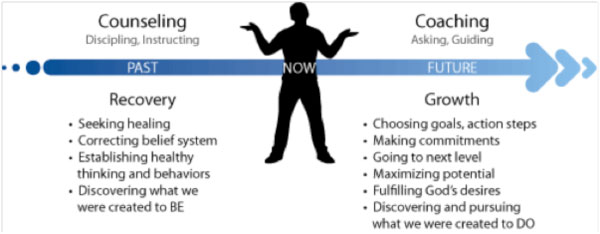 The presence of the unconscious, which is the repository of all our previous experience with all its achievements and traumas, leaves our perception of ourselves and the world largely subjective. nine0003
The presence of the unconscious, which is the repository of all our previous experience with all its achievements and traumas, leaves our perception of ourselves and the world largely subjective. nine0003
Our psyche itself is dialectical as a system in its striving for stability and at the same time for change and development.
This, on the one hand, helps to equalize the maintenance of “energy homeostasis (emotional peace) due to the desire to complete unfinished situations (gestalts), which makes psychotherapy possible.
(In psychotherapeutic relationships, those situations are reproduced that once ended “badly” in life. In the future, the unconscious reproduces them again and again in the “hope” to end “good”, as “you want.”
The main trouble is precisely that the infantile part of the personality “wants”, the time for fulfillment of desires has long passed, the person has grown up and the previous relationships in which he was frustrated cannot be repeated, accordingly, the “desire” itself has become simply unfulfillable in an adult life.
But the infantile part, left unsatisfied, does not know about it and persistently tries to get its way. Psychotherapy helps to realize this desire, to mourn its impracticability in the form in which it exists, to find acceptable ways to satisfy it. And also, perhaps, to learn to live with "eternal longing" for the "lost paradise"). nine0003
On the other hand, the dialectical nature of the psyche manifests itself in the constant striving for "discovery of new gestalts" - the resolution of new developmental tasks, the development of creativity in the broadest sense of the word, that is, it contributes to the constant disruption of homeostasis.
Incomplete situations, in addition to our conscious desire, are reproduced in new relationships, including therapeutic ones. The therapist is a person, like the client, living inside his own subjectivity. Within his own subjectivity, everyone is absolutely right, since this subjectivity is confirmed by the experience of his life. And to minimize the intrusions of one's subjectivity, due to past unfinished conflicts, is the direct responsibility of the therapist. nine0003
And to minimize the intrusions of one's subjectivity, due to past unfinished conflicts, is the direct responsibility of the therapist. nine0003
We don't get paid for time. Payment for time is the external, formal side of our "therapeutic costs". We are paid money for our ability to self-awareness and use this ability as a tool to clarify what is happening with the client (his neurotic repetitive behaviors that began to interfere with his life) and help to implement the changes that the client “orders”. We are also paid money for our ability to withstand the emotional stress that arises when we have to keep part of our experiences without dumping them at the border of contact with the client. nine0003
It is precisely this professional self-awareness” (legalization and accessibility for experiencing a wide range of various emotions), which resulted from the completion of internal conflicts (or at least awareness of them and the distinction between the moments of their reproduction, which makes it possible not to play them again and again already in a therapeutic relationship unconsciously , unwittingly involving the client in "his neurosis") helps us to have a wider "field of empathy" in relation to the client than he has in relation to us and his loved ones.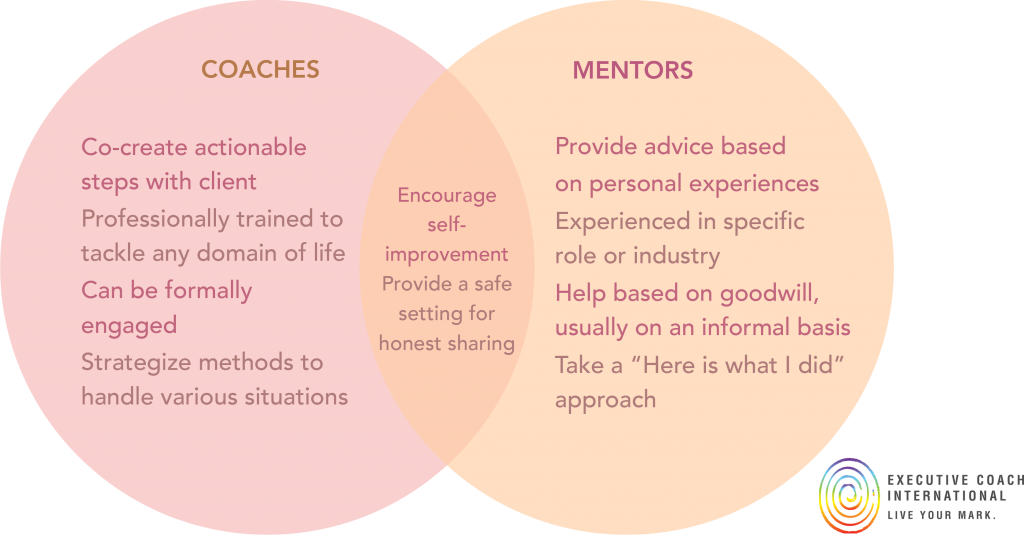 nine0003
nine0003
It is she who is the source for us to build therapeutic hypotheses based on our ability to see a wider context of the situation than the client sees and to discover those resources that the client does not notice or does not understand how to use.
And then I can say that the main difference between the therapist and the client is a more developed ability to distinguish their feelings and use them as informational signals about what is happening in interpersonal relationships.
The declared main goal of therapy is to restore a person's ability to make their own choices in life, based not on fear or guilt, but on the benefits for self-development. nine0003
The concept of "mental health" has not been outdated since the time of Freud: "A person must be able to love and work."
“The ability to love and work” is formed gradually, as a person grows up, on the basis of a good, kind self-relationship, self-realization, and not “self-image”, self-support (the ability to console and calm oneself, restore hope that “everything will be fine » ) social productivity. This, in my opinion, is personal maturity: the courage to make choices based not on the avoidance of fear, shame or guilt, but on the basis of one’s own needs, correlated with the needs of those around them, and stable internal assessments of “good or bad”, based on one’s own experience. "So it turns out" becomes "I do it this way." nine0003
This, in my opinion, is personal maturity: the courage to make choices based not on the avoidance of fear, shame or guilt, but on the basis of one’s own needs, correlated with the needs of those around them, and stable internal assessments of “good or bad”, based on one’s own experience. "So it turns out" becomes "I do it this way." nine0003
From the point of view of internal mental processes, “personal maturity” is emotional stability and the ability to restore it in case of stress.
However, quite a long time ago it was discovered that there is simply no average "norm". There is an agreement on the "rules of the game" within each society. "Norm" refers to the rules adopted by the majority. This also applies to social behavior and psychological characteristics of members of society.
The more “adult” a person is, the more natural it is for him to observe the “rules of the game” of the community to which he feels he belongs. The closer the “rules of the game” of the community are to the “universal” ones (respect, acceptance, responsibility), the less the community “looks” like a “sect” and the more tolerant it is towards representatives of other “confessions”, the more community members are interested in dialogue with each other. with a friend, in whom the differences between its members are discovered and discussed, and the less the demand "hovers" among the members of the community "similar to each other" and "special differences" from other communities. nine0003
with a friend, in whom the differences between its members are discovered and discussed, and the less the demand "hovers" among the members of the community "similar to each other" and "special differences" from other communities. nine0003
It can be said that the “adult” community is engaged in joint work, and not endless clarification of relations with each other and finding out who loves and respects whom more, less (the phases of establishing security and attachment relationships have been replaced by the phase of organizing joint activities).
And in this sense, psychotherapy rather provides “anti-social help”: it helps a person to discover and accept his individual “norm” of mental state and behavior, which will be most suitable for him to fulfill his own tasks in “love and work”. nine0003
Let me tell you a banality: the basis of successful psychotherapeutic activity is the personal maturity of the therapist. It is she, personal maturity, that allows you to implement both the basic principles of the Gestalt approach and the ethical position in relation to the client and colleagues.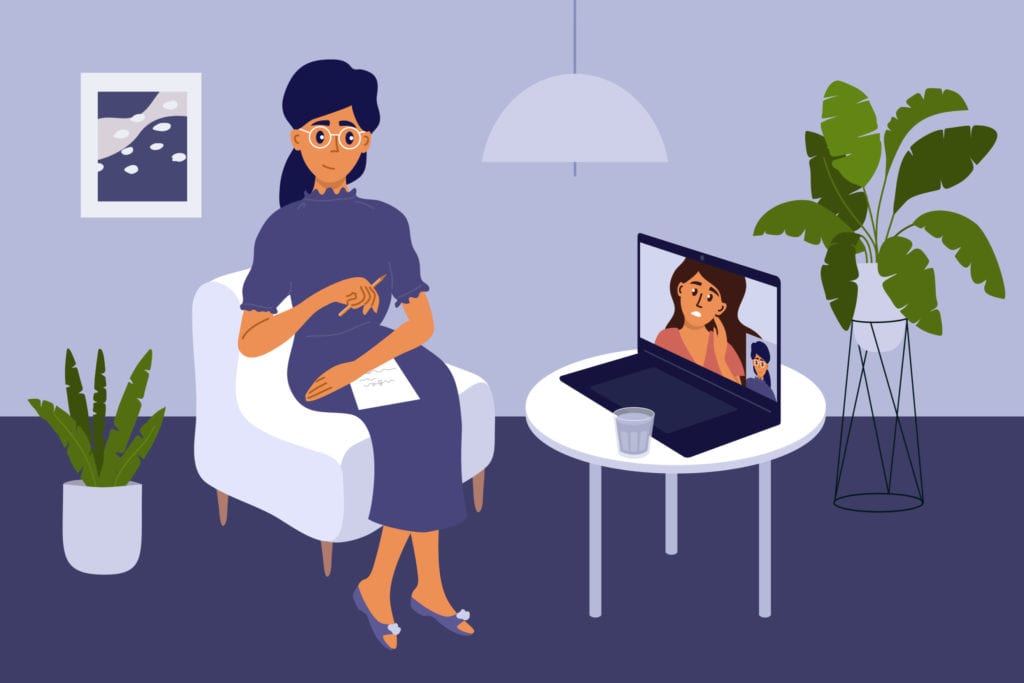
Before I continue talking about principles, values and ethics, I have to clarify one more "slippery" concept. What is a "successful psychotherapeutic activity"?
For me, this is an activity, as a result of which the therapist maintains his health (mental and physical), becomes richer (materially and spiritually), develops creatively (both in the profession and in other areas of life). For the client, "successful psychotherapy" is the process by which he first or regains "the ability to love and work" (I absolutely agree with Freud's definition of mental health). nine0003
The principle of freedom and responsibility.
The Gestalt approach assumes and gives a very high degree of personal freedom.
However, the concept of freedom does not exist without its "second pole" - responsibility. And the principle of responsibility is one of the fundamental in the Gestalt approach. We encounter the concept of responsibility as soon as we start talking about freedom. Responsibility is the ability to deal with the consequences of one's actions. In the "past neurotic life" responsibility did not differ from guilt or shame, that is, it was experienced as punishment or self-punishment for violating "social norms". nine0003
Responsibility is the ability to deal with the consequences of one's actions. In the "past neurotic life" responsibility did not differ from guilt or shame, that is, it was experienced as punishment or self-punishment for violating "social norms". nine0003
Such an understanding of responsibility assumes that a person living in society follows rules not invented by him and often experienced by him as a burden that he periodically wants and manages to get rid of, that is, to violate social prohibitions and “do it his own way” to his own pleasure . But the price for such a violation will be guilt or shame, which is experienced as a painful injustice in the way of satisfying desire.
Neurosis lies in the fact that we all want to be taken seriously and respected, but at the same time, to be asked less and to treat our mistakes condescendingly, attributing them to “weakness”, “injury”, to the fact that “in my mother didn’t love me as a child,” but not to personal irresponsibility. nine0003
nine0003
And then it is not we who will suffer inconvenience from our mistakes, but our loved ones, those towards whom we make these mistakes.
I am free if doing what I want and can do, I do not feel anger and resentment (that is, I do not make claims to someone) and do not suffer from guilt (that is, I do not make claims to myself). And this means that I take no less than I want, and no more than I can. What I do is within my power, it is I who am ready to endure so much shame or guilt if I do something “against my conscience”. nine0003
So it turns out that there is no freedom in general, as an abstract category or as a gift for everyone and everyone, but there is an individual ability of everyone to endure a certain amount of resentment, guilt or shame and regulate themselves by these experiences.
Freedom is one of the main values of the Gestalt approach - giving a person the opportunity to choose what he wants and how to live, respect for his individuality. In the process of training and further work, we learn to get rid of the old rules and attitudes, external and internal, which have been guiding our lives for quite a long time. These attitudes in Gestalt are called introjects. As well as from rigid ideas about oneself and the world around. And it gives an intoxicating feeling of freedom. In accordance with this value (freedom), when we become therapists, we help clients do the same work of freeing themselves "from the clutches of neurosis." nine0003
In the process of training and further work, we learn to get rid of the old rules and attitudes, external and internal, which have been guiding our lives for quite a long time. These attitudes in Gestalt are called introjects. As well as from rigid ideas about oneself and the world around. And it gives an intoxicating feeling of freedom. In accordance with this value (freedom), when we become therapists, we help clients do the same work of freeing themselves "from the clutches of neurosis." nine0003
In this sense, Gestalt is a very mature therapy. Each of us wants to be taken seriously and taken seriously. Please, says Gestalt, great, you are an adult and you are taken seriously, that is, you are respected and your opinion is taken into account. But then you be kind, deal with the consequences of it. And if it is difficult for you, you can refuse it, and this will also be your choice, which will be taken seriously.
If it is difficult for you to be responsible for yourself and your actions, then there will be special, reduced requirements for you, but then there will also be less respect and a serious attitude towards you. Choose, either you are a child, and then they will decide for you, or you are an adult, and then you yourself are responsible for the consequences. nine0003
Choose, either you are a child, and then they will decide for you, or you are an adult, and then you yourself are responsible for the consequences. nine0003
Everyone has the right to their own individual standard, however, if you want to be accepted in society, you will have to follow the rules of the majority. If you don't like it, either just go outside, or form your own society that lives by your rules. This applies to clients as well as future or established therapists. This is also true in the relationships of therapists with clients, with colleagues, and with their loved ones in everyday life.
Accordingly, exactly to the extent that the therapist himself has accepted the principle of responsibility as "freedom with consequences that you yourself have to deal with", to the same extent the therapist will be able to transfer it to the client. nine0003
And then the gestalt principle declaring freedom and responsibility means for the therapist his ability to endure the consequences of his therapeutic actions.
And for the client - to cooperate on their request in the area of their capabilities.
A few more dimensions of freedom and responsibility are added to professional life.
For example, the concept of professional identity and its value for each of us. We are no longer just people living in society and somehow dealing with our conscience, we are now also professionals who carry out some kind of activity, which also cannot be free from the concepts of responsibility and freedom, since it is carried out according to certain rules. And we, therapists, are the bearer of these professional rules. nine0003
I think that the talk about the fact that there are no rules in Gestalt and in psychotherapy in general is one of the distortions of the principle of responsibility. If there were no rules, boundaries, and at least some kind of framework, we could not engage in psychotherapy as a professional activity.
However, we all go through certification, that is, professional selection based on some criteria, we all distinguish between good and bad work. And if the first happens according to a more or less standardized scheme and criteria that we somehow agree on, then the second most often happens to the best of the taste and experience of the one who evaluates. nine0003
And if the first happens according to a more or less standardized scheme and criteria that we somehow agree on, then the second most often happens to the best of the taste and experience of the one who evaluates. nine0003
These criteria are very simple: be aware of what you are doing in therapy when you are doing something (i.e. doing a creative experiment), not harming the client more than he is harming himself by resisting therapy, and not harming yourself to prevent quick "burnout" of the therapist. As you can see, these are rather “general therapeutic” criteria than purely “Gestaltist” ones. Of course, these requirements limit the freedom of the therapist.
The Gestalt value of "freedom" is maintained here through the freedom of each therapist's choice to accept these demands as pertaining to him, and thus make him a member of a new group of people who support these demands, or not to accept them, to consider them imposed, but at the same time belonging to this group of people is excluded. nine0003
nine0003
Thus, one of the ways to implement the principle of responsibility and freedom is the conformity of therapeutic work with the requirements accepted in this community. If you have chosen this direction of psychotherapy, then take the appropriate assessments. It is necessary to feel that you belong to a group of people that is significant for you and to be recognized by them.
An important issue for me is interaction with representatives of other "confessions", openness to mutual dialogue.
This presupposes sufficient inner freedom and breadth, which allow dividing the world not into "strangers" and "ours", but at least into "acquaintances" and "strangers". Moreover, if we talk about professional identity, then it inevitably includes self-development as a therapist, and I can’t imagine this process without contact with new views and new people. What will be our contacts with colleagues "acquaintances and strangers" largely depends not on these people, but on ourselves, on the amount of our own hostility that we project into the outside world, so that later we can defend ourselves from it as from an "external enemy". nine0003
nine0003
From this follows the idea of permeable community boundaries for new members and cooperation with colleagues of "other faiths".
I will also mention the aspect of free contact with hierarchically "senior" and "junior" members of the community, which is also not an issue that can be easily resolved. Where does my freedom in relation to them begin and end?
A feature of the life of the psychotherapeutic community is the intersection of many contexts: educational-therapeutic, friendly-group-individual. Students become colleagues of their teachers, colleagues undergo therapy with each other... It seems to me that hierarchical relationships and hierarchical boundaries in the profession are the same as in life: adult children still remain younger, this is natural. That's all. And thanks to the teachers for their support. nine0003
The need for personal and professional development is both our direct responsibility as therapists and our freedom to develop "forever and ever".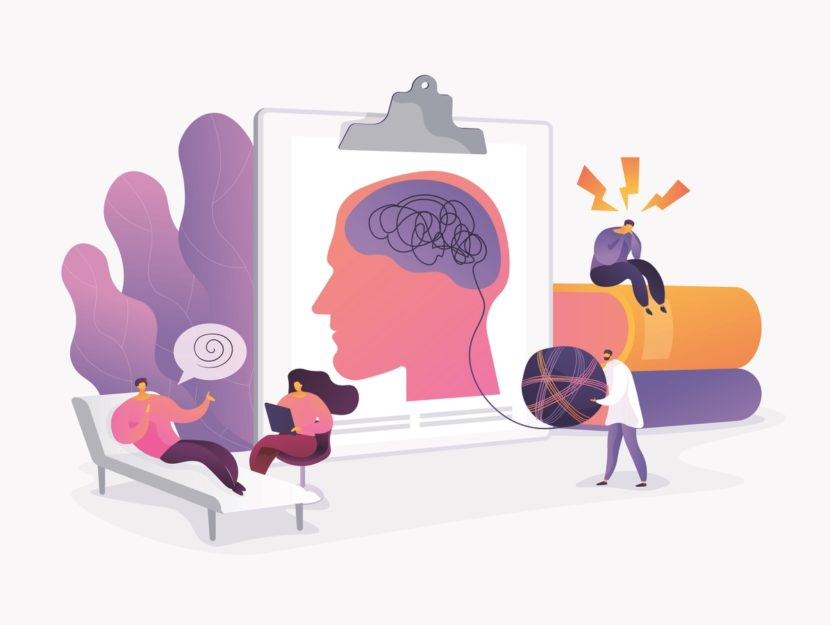 Personal development is necessary in my opinion in order to be able to empathize with the widest possible range of feelings that the client presents to us, as well as in order to engage in his life, and not act out our own internal conflicts in the therapeutic relationship. This very personal development in this case helps to change the position of “the fool himself” in relation to the incomprehensible and frustrating in the client to the position of “what is it” and continue to study what is happening. nine0003
Personal development is necessary in my opinion in order to be able to empathize with the widest possible range of feelings that the client presents to us, as well as in order to engage in his life, and not act out our own internal conflicts in the therapeutic relationship. This very personal development in this case helps to change the position of “the fool himself” in relation to the incomprehensible and frustrating in the client to the position of “what is it” and continue to study what is happening. nine0003
professional development provides an opportunity for creative exchange with each other, becomes a source of inspiration and movement forward, based, among other things, on healthy competition with colleagues, which is not about harming a partner, but about learning to do no worse.
Distortions of the principle of liability.
For students of psychotherapy, the very principle of responsibility often becomes a disappointment in psychotherapy itself. Legalization and search for "one's own norm", liberation from outdated rules and requirements for oneself and others is a very pleasant process. Naturally, no one wants to get into new obligations when they have just got rid of the old ones. The first distortion of reality arises: freedom begins to be understood as permissiveness. Liberation from introjects occurs, but the level of self-regulation does not change. nine0003
Naturally, no one wants to get into new obligations when they have just got rid of the old ones. The first distortion of reality arises: freedom begins to be understood as permissiveness. Liberation from introjects occurs, but the level of self-regulation does not change. nine0003
In place of some external regulators - introjects in the spirit of "this is impossible" or "you will be punished for this" - new ones come - in the spirit of "everything that is pleasant and useful to you is possible", instead of your own norms and rules, regulating your own behavior in society and which are called conscience. It turns out that the reality principle, which was supported by rigid parental introjects, but fulfilled its task - supported social adaptation, was completely legally replaced by the pleasure principle, which began to disrupt social adaptation, since a person began to take into account the characteristics and needs of people close to him much less. nine0003
I think that it is precisely because of this distortion of reality that Gestal Therapists are called a “sect” (that is, a near-marginal group united by a common way of life and values), and relatives are very dissatisfied with the “personal growth” of their husbands, wives, children and parents, with whom it became difficult to communicate.
I should note that “personal growth” does not always lead to conflicts with loved ones, and it seems to me that this is precisely the case: some use their personal growth to improve their contacts, while others use their personal growth to justify their irresponsibility, which used to be “ was punished" by guilt and shame and was less noticeable, and now it has received the full right to be called "my needs, which no one else will take care of except me"
Thus, it turns out that as a result of training, the future therapist is freed from responsibility for himself as he is. By the way, this most often happens to those who were previously responsible, guilty) for what is happening in their lives they were not (“my mother did not love me in my childhood” and “I am such a person and that’s all”). Only earlier, parental introjects prevented them from showing themselves “in all their glory”, limiting these “beauties” with guilt or shame, but now “everything has become possible”.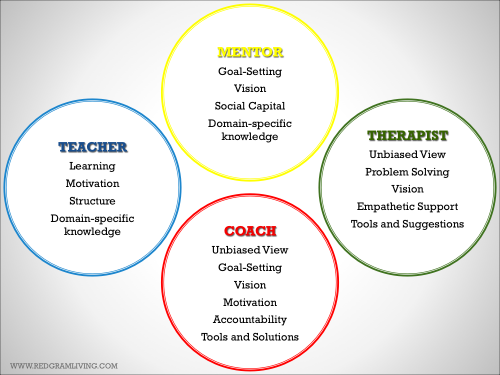
It is clear that responsibility is bad because it limits not from the outside, but from the inside. Each of us is a tougher and more demanding “judge” than any other external person. nine0003
The implementation of the principle of responsibility presupposes the existence of special psychological skills to restore self-support and self-acceptance. These are the abilities to forgive, feel sorry for yourself, educate, maintain an interest in life, change your behavior in accordance with changing living conditions, self-reflection, as a result of which the question “what is wrong with me” becomes more relevant than the questions “What is he a goat” and "what should I do with it."
Unfortunately, it happens that therapy and its authority are used as "permission from above" for individualism and ignoring the feelings and needs of other people. The experience of one's own "freedom" in contrast to the "non-freedom" of others feeds a false sense of superiority, based not on one's own achievements in society, but on the depreciation of society itself. nine0003
nine0003
So it turns out that if we, psychotherapists, work with only one dialectical pole - the value of self-presentation - and do not work with the other - the responsibility for this self-presentation - then we contribute to the destruction rather than the development of personality. The distortion in understanding the principle of responsibility also manifests itself from the “other pole”: those who were already quite “free” before (that is, they easily ignored others and insisted on their own unconditional priority in everything), they pick up directly opposite introjects in the spirit of “do not harm client in one way or another” and begin to actively suppress their expression (if they want to become “good therapists”). nine0003
In both cases, one thing is common: future therapists are not aware of what self-regulation (as opposed to introjective regulation) is or are unable to implement it. They continue to be regulated by the accepted "without digestion", that is, without a critical adaptation to their needs and circumstances of life, introcta.
One introjective system replaces another if a person does not learn to withstand the tension of his own autonomy, a certain pause between meeting something new, no matter who it comes from and no matter how attractive at first glance, and checking this new one for suitability and usefulness to him, now. In the language of the Gestalt approach, unsurmounted fusion leads to introjection. nine0003
I think that it is precisely the lack of separation of oneself from the group as a whole, from the coach - insufficient autonomy and self-reliance - of future therapists that underlies all subsequent distortions of the principles and values of the Gestalt approach and, above all, the principle of responsibility. Fusion is the first and most powerful reality distortion mechanism. Merging both in the form of the indistinguishability of one's boundaries in relations with the Other, and merging, which can rather be called a lack of differentiation of the Self itself, that is, an insufficient distinction between oneself as a separate person from everyone with their own needs and characteristics. nine0003
nine0003
This situation, in my opinion, is also explained by the peculiarities of the psychological field, including the field of learning. Psychotherapy is a special activity, and psychotherapists are special people. It's no secret that people go to psychology to solve their problems. It is also not news that at first students try to solve these problems through “treatment” and “observation” of others, protecting themselves, who are already suffering and fragile, repeatedly emotionally wounded in life, from unnecessary worries.
Quite quickly, interests polarize: some are more interested in methods of influencing others, these students delve into the study of manipulative approaches (in the best sense - NLP, hypnosis), others are more interested in themselves and those similar to themselves, and turn to personality-oriented approaches (psychoanalysis , gestalt, psychodrama). nine0003
Naturally, having united in groups and communities, these people form a very special psychological environment, which provides more opportunities for support and acceptance of its members, but at the same time provokes a high level of conflict, since in this environment neurotic ways of interaction of its members.
If a person has already found himself in a social group, has begun to realize his interests, has shown some initiative in the outside world, then the so-called schizoid level of his development (the main task of which is to assert his right to exist in this world and gain confidence that this existence is possible ) the person "mastered". nine0003
The great importance and place occupied by clarifying relationships, establishing distance with each other, searching for ways to maintain relationships with different people, indicates that the process of solving the next developmental task is underway - establishing attachment relationships and maintaining one's autonomy in them.
The two neurotic ways of solving this problem, both in individual history and in relations with the group, are the path of dependence, that is, the renunciation of one's autonomy in favor of relations, and the path of counterdependence, that is, the renunciation of relations in favor of autonomy. nine0003
nine0003
In both cases, the person remains not free in terms of relations with others, that is, in fusion (either with specific people whose values are uncritically accepted, or with their “internal objects” that regulate the rules of behavior) with those who have taken the place of parental figures, became new authorities (in the case of dependence), or cannot win this authority in any way (in the case of counter-dependence). In the situation of teaching psychotherapy, these new "parental authorities" become trainers, primarily of basic programs, in relation to which the conflicts of the phase of separation - individuation unfold. nine0003
To help the client (student) in resolving conflicts in this phase, the therapist (trainer) must be free of them himself or at least be informed about how they manifest themselves in him. The trainer-therapist must be resistant to the temptation of love or power in relations with clients-student, maintain access to all his experiences, both to warm feelings and to aggression, that is, to remain holistic, “incorruptible” neither by love, nor by resentment, nor by guilt. .
.
If the coach is “bribed” by power or love, needs them from the client (that is, the coach’s experiences from one of the poles are blocked so as not to intrude into relationships where he “feeds” on the client’s love or power over him), then he will provoke in the client the same splitting, that is, the blocking of feelings. Accordingly, the coach will seek to take a position of superiority (using his status), "good" or "evil". nine0003
From here: http://www.psihologgoroda.by/statsyi/tatsyana-sidorova-etnicheskie-normy.html
End
Tags: gestalt, psychotherapy, articles
T-shirt shows a protruding humerus. The life of a ski chiropractor
Cross-country skiing
-
Mikhail Kuznetsov
MatchTV
Sports doctor Andrei Deryagin spoke about the peculiarities of his work in the Russian national cross-country skiing team. nine0025
— When and how did you, a chiropractor from Izhevsk, end up in the ski team?
— It all started with Maxim Vylegzhanin. He somehow got to see me, and he apparently liked it. He asked me to work with his ski club. I agreed. Then they began to invite me from the Udmurt national team to Russian competitions. Guys from the Russian national team gradually began to come there. And once in Syktyvkar, Yegor Sorin approached me: "My lower back hurts." I healed him. He says: "Do you want to try to work with the Russian team?" Why not? Tried. It started spinning and spinning, and in 2018 he got into the national team. nine0003
He somehow got to see me, and he apparently liked it. He asked me to work with his ski club. I agreed. Then they began to invite me from the Udmurt national team to Russian competitions. Guys from the Russian national team gradually began to come there. And once in Syktyvkar, Yegor Sorin approached me: "My lower back hurts." I healed him. He says: "Do you want to try to work with the Russian team?" Why not? Tried. It started spinning and spinning, and in 2018 he got into the national team. nine0003
— Did you practice skiing before?
— Yes, but not professionally.
- How necessary is a chiropractor for a ski team?
- As practice shows, it is very necessary. There are athletes who end their careers due to injuries, due to the fact that there was no such person. A sports doctor can't always correct some problems the way a chiropractor can.
- What problems do skiers most often deal with? nine0003
- Pain in the lower back, shoulders, legs, back. In the summer, when the roller-skiing season begins, their elbows hurt.
In the summer, when the roller-skiing season begins, their elbows hurt.
- What does your usual working day look like at, say, the World Cup stage?
- In the morning before the race, I work with those who need to tap something or someone has shot somewhere, pulled. That's all. And in the evening after the race, work again.
- Do you need the help of a therapist during the competition?
- It happens, of course. During sprints, in between starts, I help if, say, someone jerks his shoulder. Someone just needs to be shaken, their back crunched. And if something happened during the race, then you will not help. Here the athlete must go.
- That is, in the morning you take one or two athletes as needed, then watch the race, and after it in the evening you have a wave of people. So?
— Approximately so, but it happens in different ways. Everything is very unsystematic. Sometimes there are a lot of people after the race, sometimes there are not many. A wave of people occurs when several groups come to one place to gather. Somewhere in the middle of such a gathering, general fatigue begins. My work at the training camp is mostly evening. The guys have the first workout in the morning, then lunch, sleep, immediately the second workout, and then dinner. And after that, free time begins, which can be devoted to self-healing. nine0003
A wave of people occurs when several groups come to one place to gather. Somewhere in the middle of such a gathering, general fatigue begins. My work at the training camp is mostly evening. The guys have the first workout in the morning, then lunch, sleep, immediately the second workout, and then dinner. And after that, free time begins, which can be devoted to self-healing. nine0003
- Is there a live queue for your appointment?
- Not. They write me messages or come up and sign up. I usually allocate half an hour for an athlete. But it happens that I can cope with one in 15 minutes, and I work with another for 40-50 minutes.
— What unusual situations happened?
- When we were at Khmelevsky Lakes, one athlete went into shock due to allergies, she began to lose consciousness. Everything happened behind my wall. I heard a noise, ran in, and had to quickly put an anti-shock injection under my tongue. Somehow they flew from Sochi together with snowboarders, and one girl lost consciousness on the plane.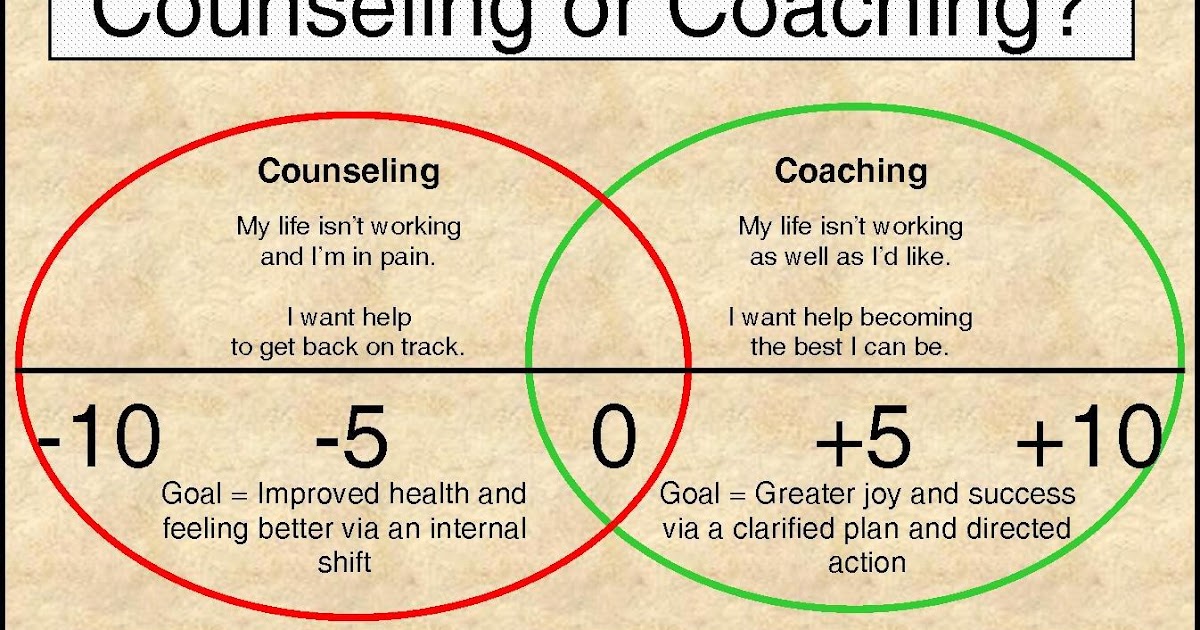 She also had to be given intravenously. nine0003
She also had to be given intravenously. nine0003
- Did you have to use the skills of a chiropractor urgently?
- Right at the first training camp, Sergey Ustyugov ran into my office and almost shouted: “Andrei Vasilievich, there Turyshev’s shoulder flew out. Let's run faster!" I quickly jumped out after him, and Sergey Turyshev walked towards me, bending over. Through the T-shirt, a humerus protruding forward was visible. With a quick movement, I pulled his hand to the side and pressed on the head of the bone. The shoulder is in place.
Last year, after the race, Alexander Bolshunov practically lost his legs, he moved with the help of Borodavko (Bolshunov's coach. - Match TV). Anya Zherebyateva (Bolshunova's girlfriend - Match TV) came to me and asked for help. I always carry 80mm needles with me to remove the CPS block. And that time they came in handy. He injected Sasha with an anesthetic into the CPS, and his legs started working in two minutes. The next day he was again at the race.
— There is a chiropractor in the USA who works mainly with boxers and MMA fighters. He has a lot of videos on Instagram where he cracks patients hard. How are you? nine0003
— I'm doing applied kinesiology. I do everything through functional tests. Crunch is rare. Someone may ask for it. I allocate crunches for one minute out of half an hour. Basically, this is work with muscles and, of course, with internal organs. But athletes are healthy people, they basically have no problems with internal organs. This happens when I visit regular patients. There you often have to work with the stomach, nerves, blood vessels, and various chronic diseases. When you work with athletes, you get a little dumber. nine0003
- Why?
- Symptomatology is basically the same. Little clinical experience is gained. Therefore, in order not to degrade and my head worked, I need to constantly change patients.
- Athletes are not afraid to go to you?
“Sometimes they are afraid.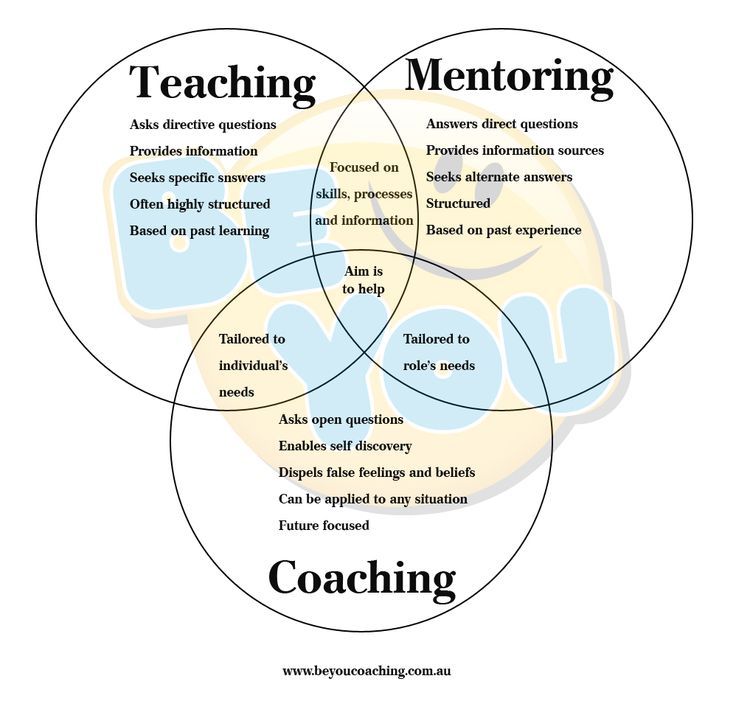 Traditionally, a chiropractor is just a person who crunches all the time. Chiropractor. But this is not about me.
Traditionally, a chiropractor is just a person who crunches all the time. Chiropractor. But this is not about me.
— And how to persuade them to come? nine0003
- Coaches force someone, pain hurts someone. Someone goes to the massage therapist, and the massage therapist understands that he cannot cope. Then he sends to me or to a sports doctor.
- Have you ever been afraid to do something wrong to an athlete of the national team?
- It happened. The risks are great. You can harm so that the athlete ends his career. Basically, a lot depends on me. The person relaxes, and I can manipulate in such a way that I cause injury. Now, of course, there is no fear. Full adaptation. I calmly work with athletes of any level. nine0003
- That is, a chiropractor can not only cure, but also cripple?
- Maybe even kill. Patients die on chiropractors' tables.
— You often shoot your work and post it on Instagram. Athletes do not mind?
- If everyone was for it, then I would post more.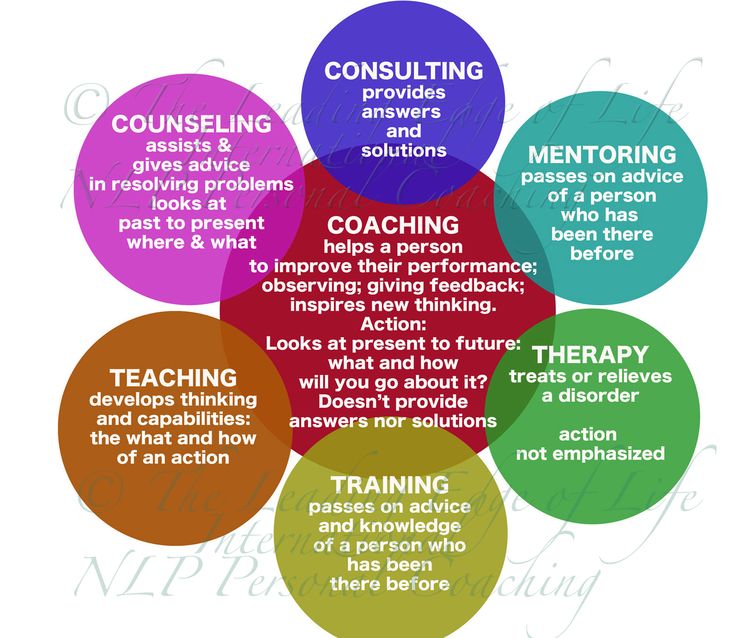 In general, of course, there are stars with whom it is difficult to communicate. Let's say I even film how an athlete walks along the track, and they ask me not to post it. All people are different. Some are simple, some are complex. I was initially taken to work with Sergey Ustyugov, because it was difficult for him to work with massage therapists and a chiropractor, who at that time was. And we somehow became friends with him. Everything else that happened after has grown on the existing base. With someone there are very good relations, with someone they are neutral, with someone there is no relationship. nine0003
In general, of course, there are stars with whom it is difficult to communicate. Let's say I even film how an athlete walks along the track, and they ask me not to post it. All people are different. Some are simple, some are complex. I was initially taken to work with Sergey Ustyugov, because it was difficult for him to work with massage therapists and a chiropractor, who at that time was. And we somehow became friends with him. Everything else that happened after has grown on the existing base. With someone there are very good relations, with someone they are neutral, with someone there is no relationship. nine0003
— In addition to working as a chiropractor, you also produce orthopedic insoles. How did you come to this?
- I myself encountered this problem in 2011. My left foot hurt a lot when I was skiing. I knew I needed insoles. And my brother at that time was just doing them. He says: “Come. I'll make you insoles." Arrived, done. I immediately went roller-skiing. And immediately the foot stopped hurting. I realized that it was a real miracle and that they needed to be made available. Developed a formula, patented. I tested them, first of all, on Vylegzhanin and Ustyugovo. nine0003
And immediately the foot stopped hurting. I realized that it was a real miracle and that they needed to be made available. Developed a formula, patented. I tested them, first of all, on Vylegzhanin and Ustyugovo. nine0003
— I saw the logos of these skiers on them. Do they get something for it?
- Yes. We have a contract with Maxim, but not with Ustyugov. Because Serega is just a kid. This is the kind of person with whom you can sign a contract with a handshake.
— You work in a clinic in Izhevsk and in Russian national cross-country skiing teams. How did you end up at the Summer Biathlon World Championships?
- In Tyumen, I was at a training camp with skiers and at the same time worked with biathletes. nine0003
- For work with skiers, you are probably paid by the Russian Ski Racing Federation. Do biathletes pay separately?
- Biathletes don't pay. I receive a salary from FMBA. Even if I constantly worked in parallel with biathletes, I would not be paid extra.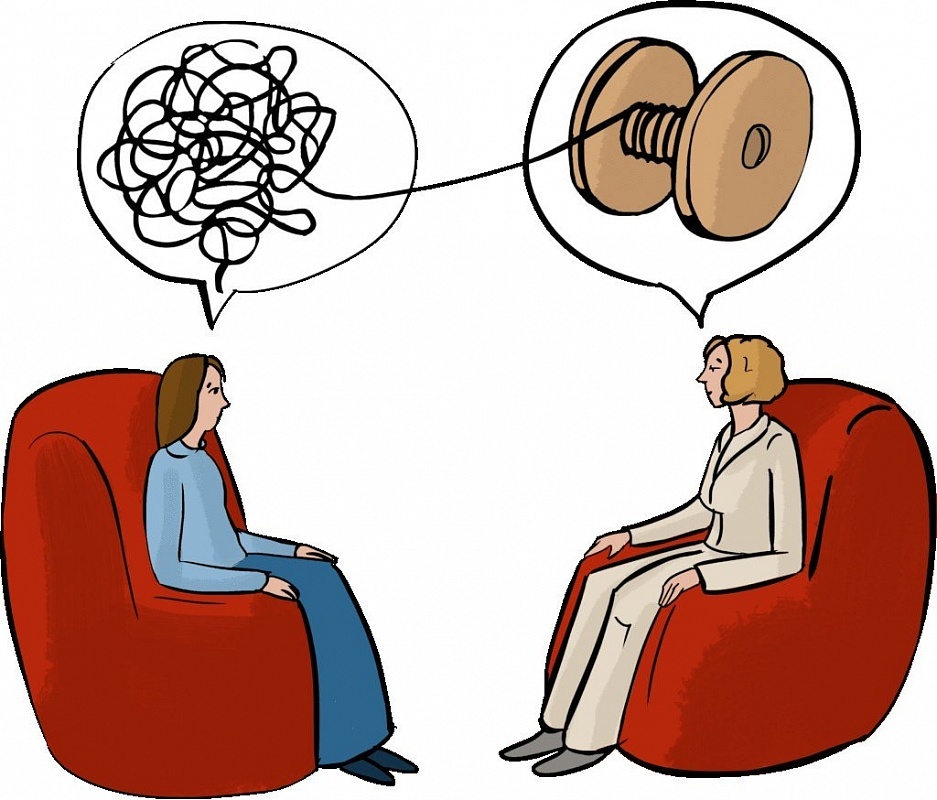 They would just send them here and there.
They would just send them here and there.
- Any biathlete can get an appointment with you?
- In principle, yes, if I have the time and desire.
- Do biathletes differ from skiers as patients?
- Biathletes are less loaded with physics, but more crooked in terms of the body, because they mostly run on skates and, as a rule, on one hand. Therefore, everything is skewed. One shoulder is higher than the other, the sore lower back is also on the side where people go more.
- I noticed from your posts on Instagram that only girls came to you at the Russian Summer Biathlon Championships. Why is that?
- Yes, none of the guys came. Yury Kaminsky, who coached Nikita Kryukov for a long time, is now their head coach. And our other chiropractor, Chechil, worked with Kryukov. He works with the group of Borodavko and Perevozchikov. I have Kramer, Sorin and juniors. Accordingly, there is hidden competition.
- Khalili didn't come either? He also works with Sorin.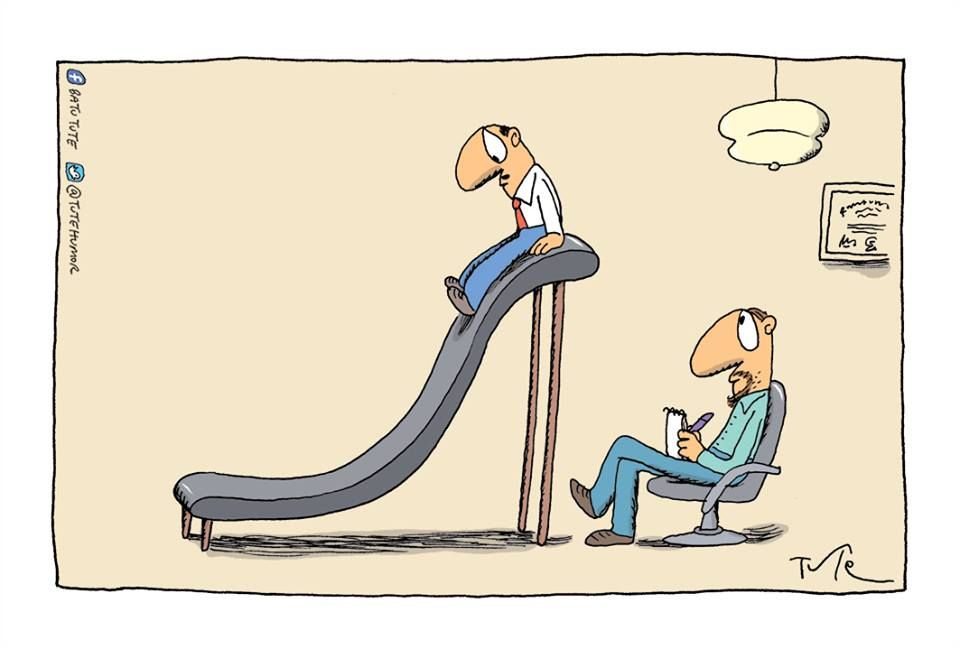
— Yes, I often work with Sorin's group. But Khalili never came at all. There are guys who go extremely rarely. They say that nothing hurts. nine0003
- Does it happen that you examine an athlete, and everything is perfect with him?
— Yes, especially when they return after a holiday. Then it happens that in very good condition. I test - and everything is really perfect. But I will say that usually such guys rarely get close to medals. Those who are somewhere near the pedestal are all overwhelmed and face problems.
- Do coaches mind athletes visiting you?
- I haven't seen anything like it. They are always in favor, because they want the maximum result, and they are happy to use all the possibilities for this. Sometimes an athlete simply cannot be forced. The older the athlete, the harder it is to work with him. There are more psychological barriers. nine0003
- Victoria Slivko, for example, visited you at the Russian Summer Biathlon Championship.




